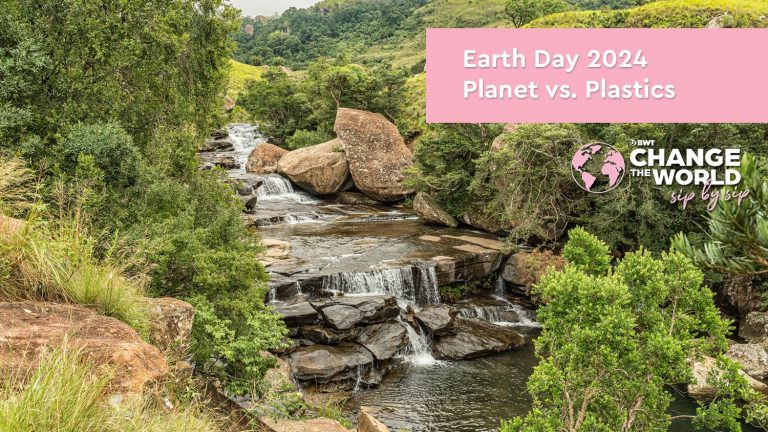No products in the basket.

Earth Day 2024 – Planet vs. Plastics
Plastic Pollution is a Pressing Global Issue with Far-Reaching Consequences. Here are Some Key Statistics: Global Plastics Production: Global plastics production has doubled since the

On April 22nd, Earth Day commemorates the birth of modern environmental movement in 1970. Let’s look at how the movement has evolved over the past 50 years:
Up until the very first Earth Day, we (as humans) consumed vast amounts of leaded gas through large and inefficient automobiles. The automobile industry belched out smoke, sludge and oil without any concern for legal consequences, reputational damage and last but definitely not least – environmental damage. Until this point, mainstream society was largely unaware of the dangers of pollution and how polluted air threatens human health.
However, in 1962, Rachel Carson, New York Times bestselling author, changed everything. She began depicting the effects of air pollution has on our environment and the consequences we may face. As it raised public awareness and concern for living organisms, ecological matters and the inextricable link between pollution and public health, the book constituted a watershedding moment, selling more than 500 000 copies in 24 countries.
By 1970, Earth Day had become a manifestation of this burgeoning environmental consciousness, putting environmental concerns on the forefront.
In January 1969, Senator Gaylord Nelson, Wisconsins’s junior senator, and many others, witnessed the horrors of a massive oil spill in Santa Barbara, California. While inspired by the anti-war protests by students in the state, Senator Nelson wanted to infuse the energies of student anti-war protests with the emerging public awareness of water and air pollutants. Senator Nelson then launched his idea for a teach-in on college campuses, and persuaded conservation-minded Republican Congressman, Pete McCloskey, to serve as his co-chairman for the initiative.

Students chose April 22, a weekday falling between Spring Break (Northern Hemisphere) and final exams, to take part in the campus teach-ins. Recognising its inspirational potential to “all Americans”, Hayes hired 85 employees to promote events across the country, and soon the effort grew to include groups, organizations, and faith-based groups. In response, the name of the event was changed to Earth Day, which immediately sparked national media attention. It certainly inspires an all encompassing moment of contemplation!
A decade ago, Earth Day inspired about 20 million Americans (roughly 10% of the population at the time) to demonstrate against the after-effects of 150 years of industrialization. These impacts were having a significant impact on human health. Universities and colleges across the country organized protests against the degradation of the environment and there were massive rallies in cities, towns, and communities.
Oil spills, polluting factories and power plants, raw sewage, toxic dumps, pesticides, highways, the loss of wilderness and the extinction of wildlife had been the subject of independent protests before Earth Day, but they united around these values.
In 1970, Earth Day gathered support from Republicans and Democrats, wealthy and poor, urban and rural dwellers, business and labour leaders.
As a result of the first Earth Day in 1970, the United States Environmental Protection Agency was formed and other first-of-their-kind environmental laws were passed, including the National Environmental Education Act, the Occupational Safety and Health Act, and the Clean Air Act. After two years, Congress passed the Clean Water Act. In the year following that, Congress passed the Endangered Species Act and shortly thereafter, the Federal Insecticide, Fungicide, Rodenticide Act. In addition to protecting millions of men, women, and children from diseases and death, these laws have also prevented the extinction of hundreds of species. Go humans!
As 1990 approached, several environmental leaders asked Denis Hayes to organize yet another campaign for the planet. 200 million people in 141 countries participated in Earth Day that year, elevating environmental issues to the global stage. The 1990 Earth Day gave a huge boost to recycling efforts worldwide and helped pave the way for the 1992 Rio de Janeiro Earth Summit.

Today, Earth Day has the largest recognised secular observance in the world, and celebrated by billions of people across the globe. Today is marked as the day of action and to bring change to human behaviour and those around us to promote local, national and global policy changes.
Now is the time to fight for a clean environment, as the urgency continues due to climate change.
Here are 6 ways you can participate in Earth Day:


Plastic Pollution is a Pressing Global Issue with Far-Reaching Consequences. Here are Some Key Statistics: Global Plastics Production: Global plastics production has doubled since the

Although all living things require water, not all water is of the same quality. The taste, safety, and usability of water are all impacted by

Is water filtration and water purification the same thing? If you’re new to the world of water filtration and purification, a question like this may

The safety and well-being of employees has been the primary concern of every business owner since the lockdown ended and more of us returned to

As the summer temperatures rapidly rise, bringing the promise of sunny days and outdoor adventures, prioritising hydration is crucial. The summer season demands that you
Join the H2O | BWT family and get R100 off your first order
Please note, minimum spend of R1000.